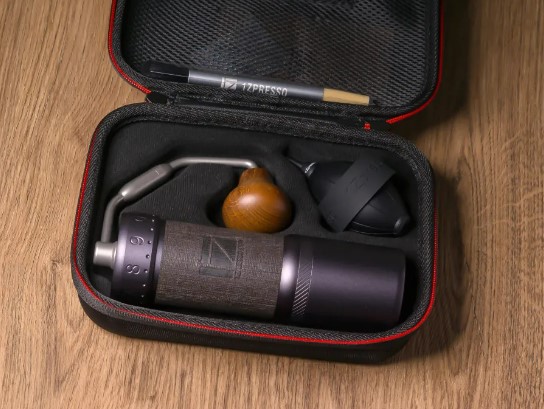Master the Art of Grinding Coffee Beans: A Guide to Coffee Grinders
For coffee fanatics, the procedure of grinding coffee beans is even more than just a routine task; it is an art kind that can considerably affect the flavor and high quality of the last mixture. Understanding the nuances of various grinder types, picking the ideal grind dimension, and using the right methods are vital steps towards achieving that best mug of coffee.
Sorts Of Coffee Grinders
There are three main kinds of coffee mills frequently used by coffee enthusiasts: blade mills, burr mills, and hands-on mills. Blade mills are one of the most basic kind, using a basic blade to cut the coffee beans. While they are budget friendly and simple to use, they often result in unequal coffee grounds as a result of irregular grinding. Burr grinders, on the various other hand, supply even more precision by squashing the beans in between a moving grinding wheel and a non-moving surface area. This causes an uniform work size, which is important for a regular coffee taste. Burr mills can be found in both level and cone-shaped forms, each offering somewhat different grinding features.
Manual mills, as the name recommends, call for manual effort to grind the coffee beans. They are frequently preferred by those that appreciate the process of hand brewing coffee or for those who value transportability. Hand-operated grinders can vary in design, from basic portable versions to more detailed counter top versions. While they might need even more initiative, hands-on mills use control over the grinding process, allowing customers to readjust the work dimension to their choice. Each sort of coffee grinder has its advantages and optimal usage situations, accommodating the diverse preferences of coffee enthusiasts.

Picking the Right Grind Dimension
With an understanding of the different kinds of coffee grinders, the next crucial action in achieving the best mug of coffee is picking the ideal grind dimension. The work dimension plays a substantial function in establishing the flavor profile of your coffee (1Zpresso J-Ultra). Different brewing methods need specific work dimensions to optimize the extraction of flavors from the coffee premises
For a crude grind, suitable for French press and chilly brew methods, the coffee beans need to appear like breadcrumbs, supplying a robust and vibrant flavor. Medium-coarse grinds, appropriate for Chemex or Clever Dripper, have a structure comparable to coarse sand, providing a well balanced taste.
Tool grinds, usually made use of in drip coffee manufacturers, have an uniformity resembling regular sand, resulting in an all-round taste. Fine grinds, best for coffee equipments, belong to table salt, yielding an abundant and intense preference. Lastly, extra-fine grinds, made use of in Turkish coffee, are as great as powdered sugar and create a strong and powerful brew.
Grinding Techniques for Optimum Taste
To extract the greatest possibility of flavor from your coffee beans, grasping appropriate grinding techniques is important. Consistency is essential when it comes to grinding coffee beans for ideal flavor. By paying interest to these grinding strategies, you can elevate the flavor profile of your coffee and enjoy an extra rewarding mug every time.
Maintenance and Cleaning Tips

In addition to normal cleaning, it is critical to evaluate your grinder for any kind of signs of wear or damages. Inspect the blades, burrs, and various other components for any type of monotony or breakdowns. Replace any damaged components immediately to preserve the quality of your coffee grind. Store your mill in a dry and clean setting to protect against any type of dampness or dust from impacting its efficiency. By adhering to these maintenance and cleaning suggestions, you can ensure that your coffee grinder continues to supply scrumptious fresh ground coffee for many years to find.
Troubleshooting Common Grinder Issues


Guaranteeing your coffee grinder functions efficiently calls for proficient troubleshooting of usual concerns that may develop during its usage. One usual issue with here coffee grinders is irregular work dimension. This problem can take place as a result of dull blades, inappropriate calibration, or unequal coffee beans. To address this, ensure your grinder's blades are sharp and correctly lined up, calibrate the mill according to the desired grind size, and drink the grinder gently while in operation to help accomplish a much more uniform grind.
This can take place when oils from the coffee beans construct up and obstruct the mill's chute. To fix this, take apart the mill and clean all components thoroughly, paying unique interest to the chute and burrs.
Finally, if your grinder is creating excessive sound during operation, it could show an issue with the electric motor or interior elements. In such cases, it is a good idea to get in touch with the manufacturer's instructions for repairing steps or look for specialist support to diagnose and fix the issue immediately.
Verdict
To conclude, mastering the art of grinding coffee beans involves comprehending the different sorts check out here of coffee mills, selecting the ideal grind size, using correct grinding techniques for optimal flavor, and keeping and cleaning the mill consistently. By adhering to these standards and troubleshooting common grinder problems, coffee lovers can boost their coffee developing experience and appreciate a scrumptious cup of coffee each time.